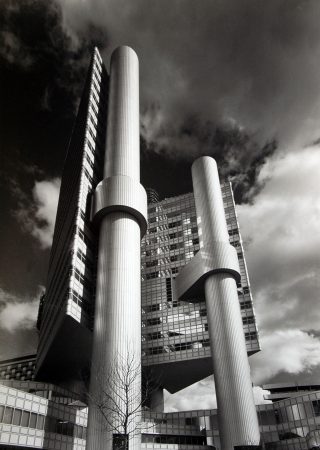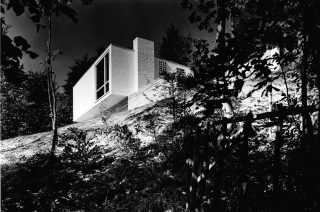Sigrid Neubert – Photographs. Architecture and Nature
9 February– 3 June 2018
An exhibition of the Kunstbibliothek – Staatliche Museen zu Berlin
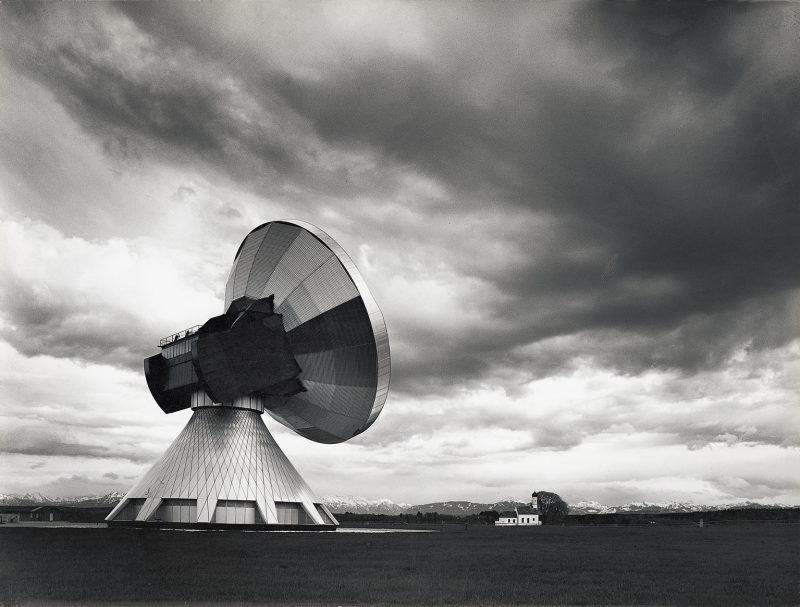
Sigrid NeubertHans Maurer: Erdfunkstelle, Raisting 2, um 1971© Staatliche Museen zu Berlin, Kunstbibliothek / Sigrid Neubert
Sigrid Neubert (b. 1927) is one of the most famous architectural photographers in Germany. For about 30 years, she worked for major architectural firms, developing her own style with her high-contrast photographs, which clearly define the structure of the buildings. Since the 1970s, she created equally impressive nature pictures, to which she dedicated herself exclusively from 1990 onwards. The retrospective at Museum für Fotografie is associated with a generous donation of essential works to the Sammlung Fotografie of the Kunstbibliothek – #Staatliche #Museen zu #Berlin.
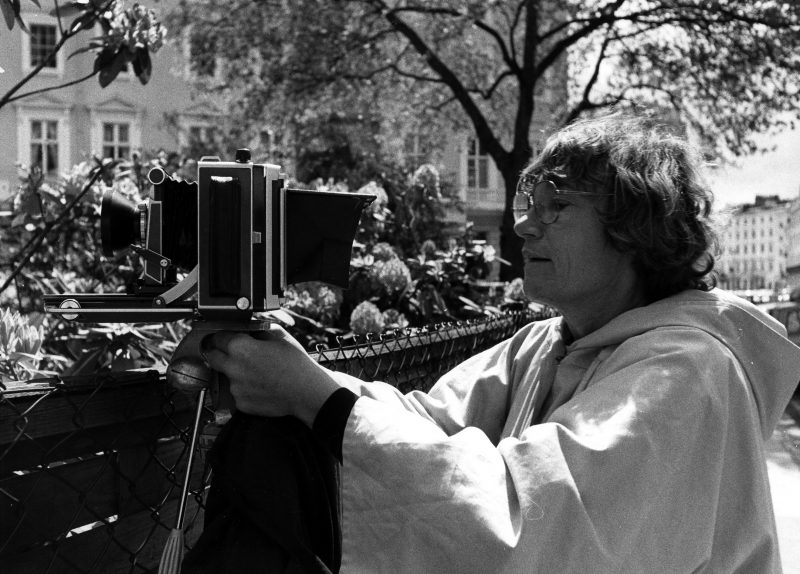
Walther Betz
Sigrid Neubert fotogra ert die Deutsche Botschaft in London, 1978
© Archiv Betz Architekten München
For 150 years, the Kunstbibliothek has been collecting photographs; the first sheets acquired in 1868 were architectural photographs. Therefore, it seems fitting to commemorate the anniversary with a retrospective on the work of one of Germany’s most important architectural photographers in the Museum für Fotografie: Sigrid Neubert passed her master’s examination in 1954 at the #BavarianStateInstituteofPhotography. After a period as an #advertising #photographer for the glass and ceramics industry, she concentrated entirely on architectural photography in the second half of the 1950s. Stylistically, she oriented herself to US models and developed her own visual language, characterized by atmospheric density and unusual perspectives.
Neubert worked for around 30 years mainly in Munich and Bavaria, but also in Austria with many important architects. She photographed for Kurt Ackermann, Alexander von Branca, Bea and Walther Betz, Hans-Busso von Busse, Hardt-Waltherr Hämer, Karl Schwanzer and Gustav Peichl, but also for outstanding, today unjustly forgotten architects like Paul Stohrer, Detlef Schreiber or Herbert Groethuysen.
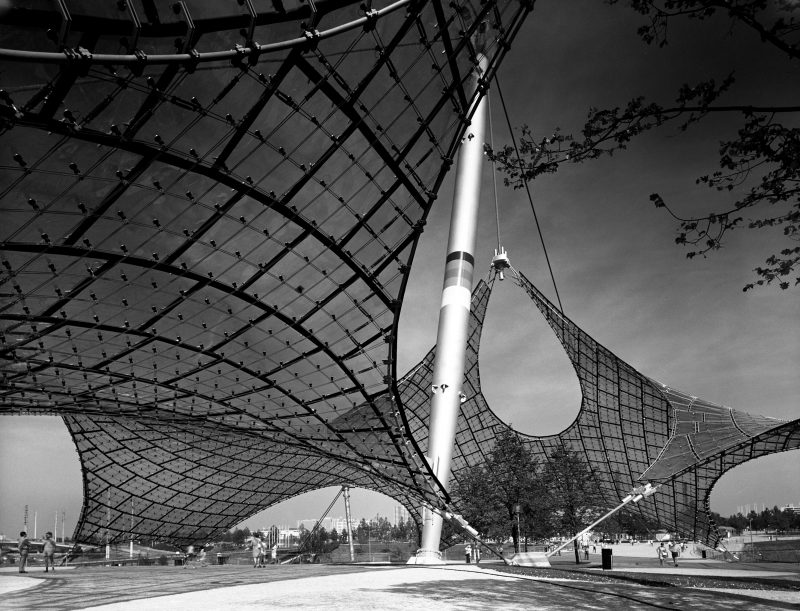
Sigrid NeubertGünter Behnisch und Frei Otto: Dachkonstruktion des Olympiastadions, München 1972© Staatliche Museen zu Berlin, Kunstbibliothek / Sigrid Neubert
With her catchy and contrasting photographs, which experienced world- wide distribution, Sigrid Neubert worked out the iconic effect of many well- known buildings like the Olympia buildings by Günter Behnisch, the BMW ensemble of Karl Schwanzer, or the head office of the Hypo-Bank by Bea and Walter Betz. Her highly aesthetic photographs firmly anchored these buildings in public perception.

Sigrid NeubertKarl Schwanzer: BMW-Hauptverwaltung, München, Museum, 1972© Staatliche Museen zu Berlin, Kunst-bibliothek / Sigrid Neubert

Sigrid NeubertWalther und Bea Betz: Zentrale der Hypobank am Arabellapark, München, 1981© Staatliche Museen zu Berlin, Kunst-bibliothek / Sigrid Neubert
Photographs. Architecture and Nature is also presenting numerous groups of works that Sigrid Neubert dedicated to the photographic capture and creative design of natural phenomena. Her photographs of the Nymphenburg Park, the megalithic buildings on Malta or Gozo and the flower blossoms were published by Sigrid Neubert not only in exhibitions but also in illustrated books.
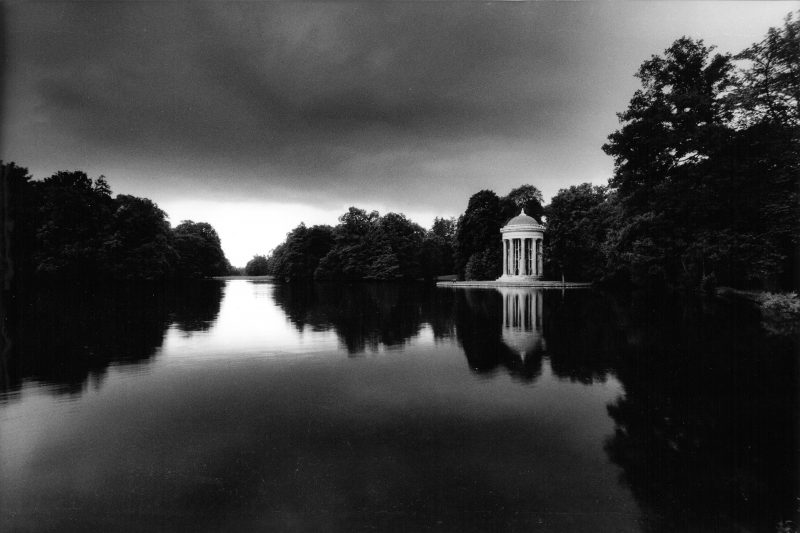
Sigrid Neubert Ohne Titel (Gartenanlagen zu Nymphenburg), 1974-88© Staatliche Museen zu Berlin, Kunstbibliothek / Sigrid Neubert

Sigrid Neubert Ohne Titel (Gartenanlagen zu Nymphenburg), 1974-88© Staatliche Museen zu Berlin, Kunstbibliothek / Sigrid Neubert
The special exhibition, curated by Ludger Derenthal and Frank Seehausen, is accompanied by a generous gift from Sigrid Neubert, which covers her entire oeuvre. This is a true fund of images that opens up many new looks and perspectives. Sigrid Neubert wrote in her book Gärten des Lichts. Betrachtungen zur Fotografie: „When we look at a pho- tograph long enough, we sink into a troubled sea of images. They now also belong to our invisible image treasure. We need these featured im- ages so that we can dream and wish and think and look and hear. “
A publication by Frank Seehausen is accompanying the exhibition: Sigrid Neubert. Architekturfotografie der Nachkriegsmoderne, Hirmer Verlag, about 336 pages, about 570 illustrations, ISBN 978-3-7774-3036-2, 45 €.
ARCHITECTURE
Sigrid Neubert: On Photography of Architecture
„I prefer to view architecture in a light of black and white. To observe the transformations of a building in sunlight and capture it in photos, I passed the day together with the sun. I wanted a building to stand there, luminous in the light of the sun, enlivening the play of light and shadow, so that the space would acquire depth and transparency, would change in the course of a day. I heightened the impact of my photos via contrast of black and white, light and dark.

Sigrid Neubert
Walther und Bea Betz: Haus Gautier, Starnberg, 1957
© Staatliche Museen zu Berlin, Kunstbibliothek / Sigrid Neubert
The precondition for a good architectural photo is a conversation with the architect. I must know his ideas, the design. His enthusiasm for his art must be transmitted to me, I want to see with his eyes, while attaching as much importance to my own. Only then can I grasp the essential aspects of a building, so that the particular nature of its construction becomes comprehensible in my photographs. Moreover, the photos should be so excited and alive that one would like to be guided through the building by them. I can only express what my temperament gives me, I can only see what my knowledge of architecture allows.
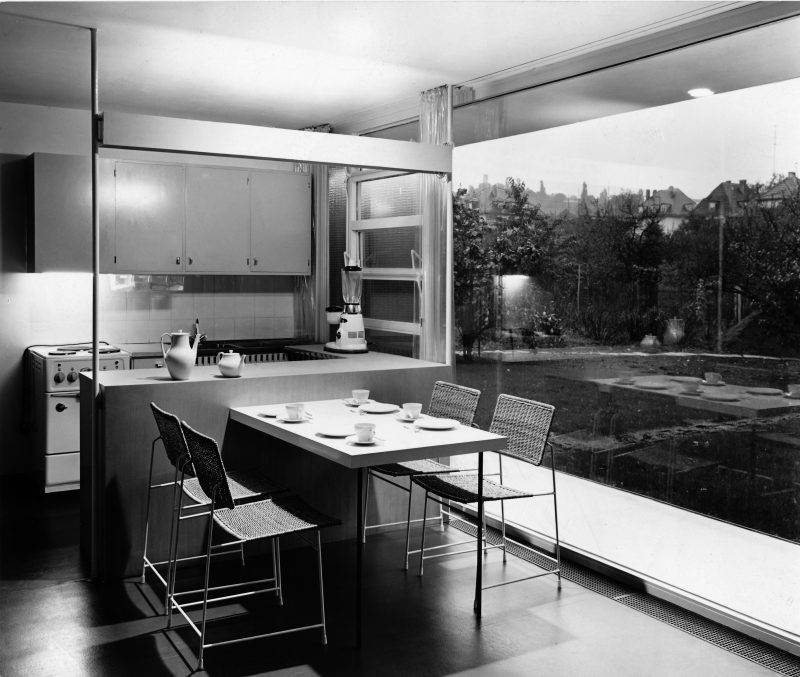
Sigrid Neubert
Walther und Bea Betz: Haus Ziegler- Gahm, Würzburg, Ausblick Küche, 1958
© Staatliche Museen zu Berlin, Kunstbibliothek / Sigrid Neubert
I apply my craft, the plethora of its possibilities. I make a decision about the right image frame and find a perspective that does not distort. With my photographs, I elucidate details, and wait for the right sunlight for the im- ages of the facades. I accentuate, subordinate, exaggerate, when it seems appropriate. With my architectural photographs, I want to inform. I decide in a matter of seconds, rapid work exhilarates my vision, I need all of my vehemence and concentration. For the most part, I photograph alone.“
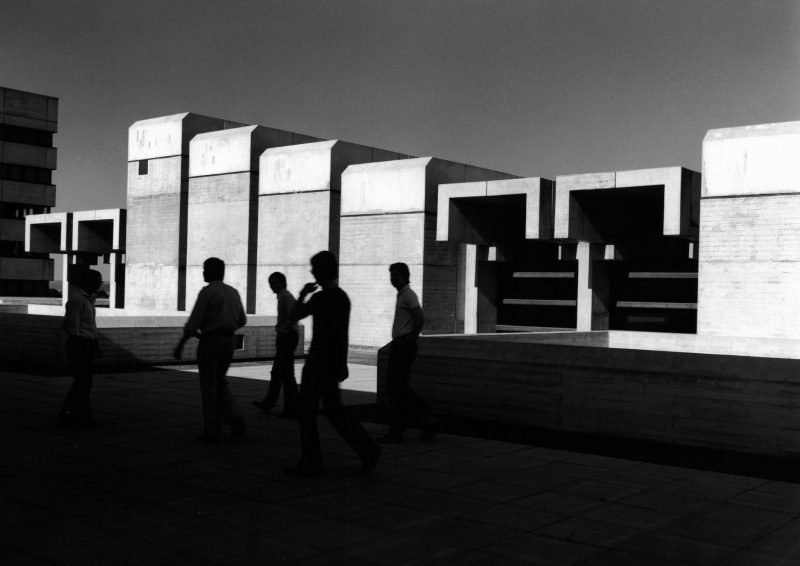
Sigrid Neubert
Universitätsbauverwaltung Regensburg: Zentrales Hörsaalgebäude, Regensburg 1975
© Staatliche Museen zu Berlin, Kunstbibliothek / Sigrid Neubert
Image Paths
Beginning in the mid-1950s, Sigrid Neubert – who had worked primarily as a commercial photographer up to that point – was concerned especially with depicting architecture. Through contacts with architects of her own generation, she became acquainted with the work of US-American archi-tectural photographers. Group discussions honed her eye for architectural qualities. Already as a commercial photographer, she had attempted to provide maximally detailed information about a given object through her images. In her work as a photographer of architecture, she sought viewing positions that elucidated each structure while arousing the viewer’s curiosity. Increasingly, she worked in series that were assembled in publications to form highly revealing sequences. She conceived of her photographs as one step within a production process that culminated in a magazine or book publication.
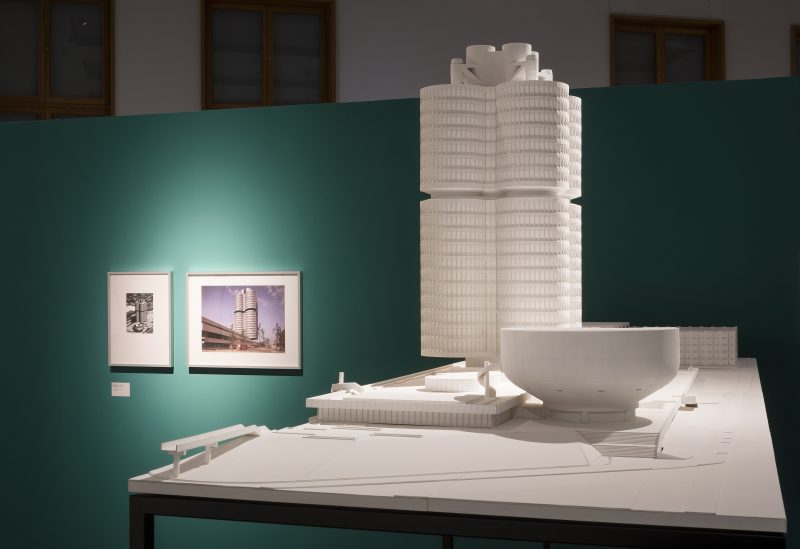
Sigrid Neubert
Fotografien. Architektur und Natur
09.02.2018 bis 03.06.2018
Museum für Fotografie
© Foto: David von Becker
Featured as well were individual motifs, for example the large format prints presented here, which once hung in the office of Walther and Bea Betz. Despite the enormous proliferation of architectural publications in the era of postwar modernism, such books and magazines were associat- ed with a keen awareness of quality. To perfect the interplay of text and image, page proofs from the journal bauen+wohnen were exchanged with the office of the architect von Busse – they are included here in order to exemplify this practice. The images which Sigrid Neubert captured on glass plates for this publication were retouched and cut down, with disturbing elements painted out and the unfinished garden masked.
During the postwar era, architectural discussions were propelled by an image boom. The reception of internationally celebrated buildings occurred via photography, and to an increasing degree, architects found it necessary to have their projects photographed by professionals.
Dialogs
The architects developed their ideas in drawings and models. At times, their photographic translation astonished the designers themselves. Herbert Groethuysen once remarked that it was only in Neubert’s images that he had discovered the beauty of a room he had himself designed. At times, dialogue between the photographer and her architects could become intense. They exchanged ideas about the buildings whose essential character Sigrid Neubert strove to fathom. She consistently perceived ar-chitecture as an expression of the designer’s personality.
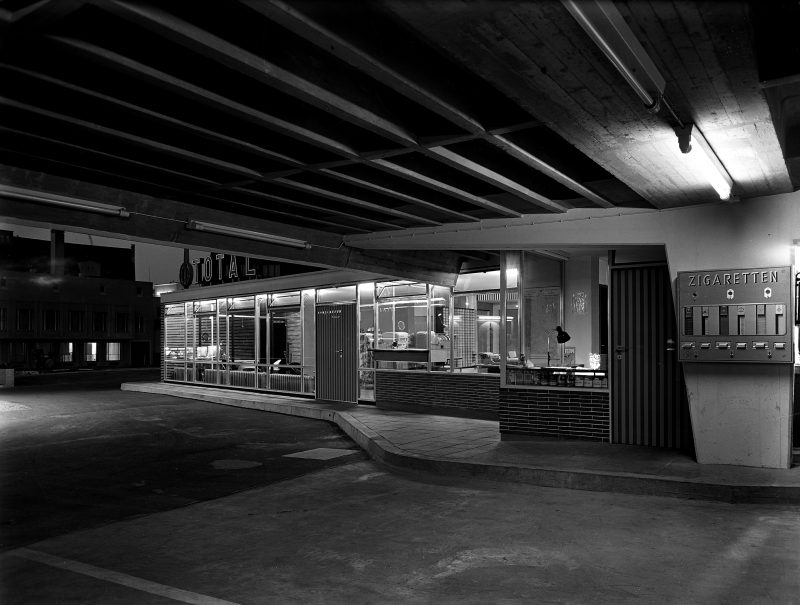
Sigrid NeubertGerd Wiegand: Parkhaus Grottenau, Augsburg, 1957© Architekturmuseum der TU München
Modern architecture in Munich was shaped by a highly heterogeneous cast of characters, who were well acquainted, respected one another, and collaborated regularly. Gerd Wiegand’s dynamic perspective view of the streamlined Grottenau parking garage in Augsburg (1957) – which betrays the influence of US-American architecture – is very close to the aesthetic orientation of Neubert’s photos. She does not screen out the surrounding old town, but instead creates an enthralling dialogue: the adjacent church roofs look as though they were ‚parked.‘
Neubert approaches Alexander von Branca’s sensual church architecture by emphasizing its distinctly traditionalist forms and materials (1964). She was not however tempted by Branca’s attractive ink drawings, which he enlivened with processions, into depicting religious ceremonies as well. Instead, she concentrates on the powerful expressive and almost castle- style formal universe of this great individualist.
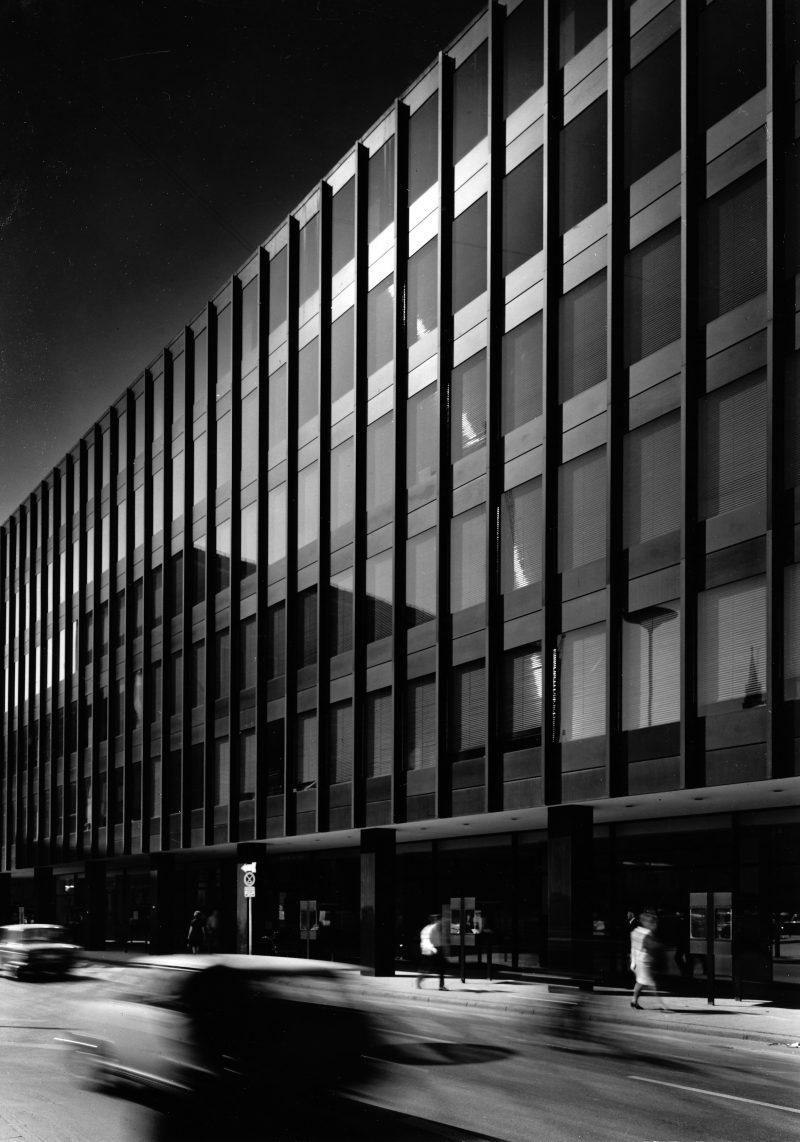
Sigrid Neubert
Herbert Groethuysen, Detlef Schreiber, Gernot Sachsse: Verlagsgebäude der Süddeutschen Zeitung, München, 1969 © Archiv Detlef Schreiber
Together with the architect Detlef Schreiber, who had designed the Süddeutscher Verlag building together with Herbert Groethuysen and Gernot Sachsse, Neubert developed a sober, objective idiom that does justice to the precision and elegance of what is perhaps the best adaptation of Mies van der Rohe in Germany (1969). With an emphasis on dy- namism, she favored exterior shots, facade reflections, and the traffic stream. Despite vigorous objections by advocates of historic preservation, the building was demolished in 2009.
Points of view
A special challenge for architectural photography is the translation of a three-dimensional structure into a two-dimensional image. Standpoint, framing, and lighting are decisive in determining what is perceived, which effect is achieved. Generally speaking, Sigrid Neubert worked intuitively, concentrating on one specific aspect of a building.

Sigrid Neubert
Karl Schwanzer: BMW-Hauptverwal- tung, München, Museum, 1972
© Staatliche Museen zu Berlin, Kunstbibliothek / Sigrid Neubert
In the case of the new BMW Headquarters in Munich, planned by the Viennese architect Karl Schwanzer, she was able to observe construction over an extended period of time. The ensemble, consisting of a high-rise, a low-rise, a parking garage, and a museum, was planned for completion in time for the 1972 Summer Olympic. Schwanzer and the concrete construction engineer Helmut Bomhard of Dykerhoff & Widmann developed a spectacular structural system: constructed first was the concrete core, which was then surrounded at ground level by a construction level, on top of which the uppermost seven stories were built. Then the construction level was hoisted upward hydraulically, together with these stories, which were suspended at the intended position. The remaining levels were constructed below. Rising in this way from the building site in perfect form – and completed on time as a symbol of expansion of this flourishing enterprise – was the tower, clad in aluminum panels that gleamed like silver. Sigrid Neubert was fascinated by the high-rise, which seemed to take the form of an enormous sculpture, and which she captured from a variety of angles.
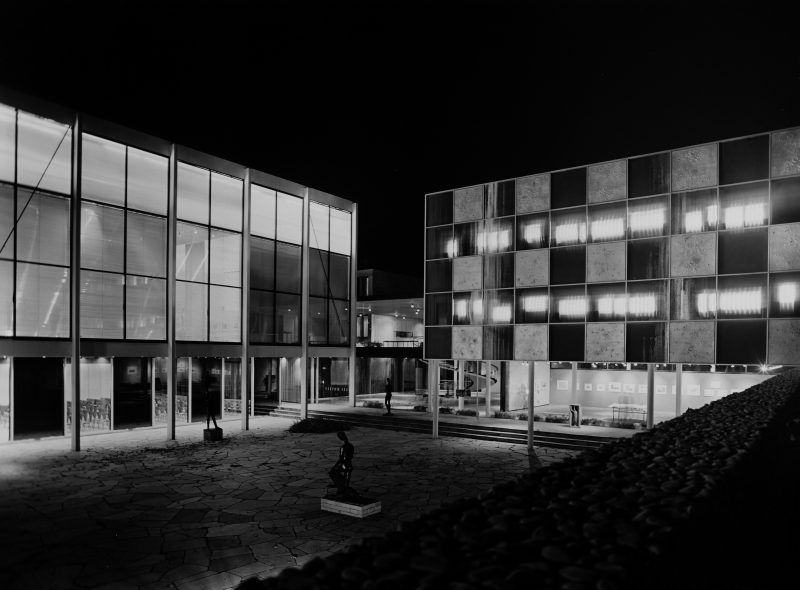
Sigrid Neubert
Manfred Lehmbruck: Reuchlinhaus, Pforzheim, 1961
© Architekturmuseum der TU München
Neubert photographed Manfred Lehmbruck’s architecturally and museologically important cultural center, the „Reuchlinhaus“ in Pforzheim (1961), which unites a library, archive, jewelry museum, and temporary exhibition venue, as an airy network of relationships between spaces and institutions, at whose center stood a spectacular staircase. She highlights the outstanding sculptural qualities of the Ingolstadt City Theater, completed in 1966, undoubtedly the most important Brutalist theater building in the Federal Republic, while calling attention to the subtle relationships between the town wall and the Renaissance-era castle.
Embeddings
In particular during the 1970s, Sigrid Neubert was strongly interested in context. She viewed buildings not as isolated objects, but instead as elements of a larger environment – a city or landscape. This is especially clear in her images of the Olympic Park. Fascinated by the subtlety and clarity of the complex, Neubert repeatedly emphasizes the integration of the buildings into the Olympic Park, designed by Günther Grzimek with just a few skillfully deployed resources. She was captivated for similar reasons by city center projects as well, among them the layouts of the new Evangelical Church Administration in Bayreuth (1975). Set directly opposite the town church, the building ended a long dispute concerning the closing of a gap between buildings. Neubert shows how the sensitive architecture of Theodor Hugues is adapted to its setting.
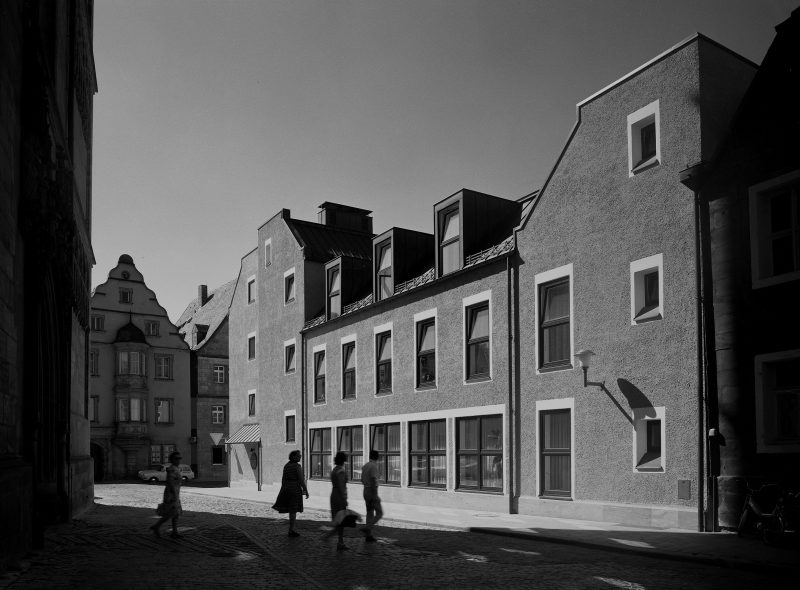
Sigrid NeubertTheodor Hugues: Evangelische Gesamtkirchenverwaltung, Bayreuth, 1975© Staatliche Museen zu Berlin, Kunstbibliothek / Sigrid Neubert
Sigrid NeubertAlexander von Branca: Heilig-Kreuz-Kirche, Weissenburg, 1964© Staatliche Museen zu Berlin, Kunst-bibliothek / Sigrid Neubert
In 1978, when working for Franz Riepl, she pursued a similar theme in photographs of buildings he designed for his Austrian birth town of Sarleinsbach. They too become part of a greater whole, and although, with the inn and butcher’s shop, Neubert photographs a communicative center of the market village, the streets remain almost void of people – only a herd of cattle gazes questioningly at the beholder.

Sigrid NeubertHans Maurer: Erdfunkstelle, Raisting 2, um 1971© Staatliche Museen zu Berlin, Kunstbibliothek / Sigrid Neubert
Her images of the Hans Maurer’s Earth Radio Station at Raisting, designed in 1964 and realized in 1970, visualize the antenna system as a technical design object within the setting of the of Upper Bavarian land- scape of the Alpine foothills. Neubert devoted considerable attention to the sky, almost evoking a cosmic dialogue. Rising in the background landscape is the freestanding Pilgrimage Church of St. Johann – juxta- posed with the antenna, it appears nearly as alien.
In the case of Hans-Busso von Busse’s Church of the Redeemer, built in Erding of 1964, Neubert was concerned exclusively with the new church building, whose extraordinary wood construction betrays the influence of the US-American „Sarasota School“ – here, however, the unobtrusive suburban surroundings play no role at all.
NATURE
Stream, 1971–72
„For many years, I returned again and again to my stream. It was a great teacher for me. I learned of the togetherness of the polarities of water and stone. I also learned to take my time, to not always bring my camera. I relinquished my excessive zeal, I just wanted to look, to walk, to experi- ence. At times, it seems to me that my stream was calling to me, as though it was waiting for me, just as I waited for it. I noticed this in my light-footedness, in my careless leaps from stone to stone, my climbs into the heights, without catching my breath. I was wide awake, dreamwalking, gifted with images that were capable of enchanting an entire stream.
And it was at this wild stream that I asked myself for the first time how it was possible for a technical device like a camera to capture moments of seeing that no longer penetrated my conscious awareness. As though one’s heart were about to leap. The invention of the camera seemed to me miraculous. At times, it occurred to me that we can hardly appreciate what we have given ourselves with this little apparatus.”
Bomarzo, 1974
„I was preparing a new book: My Favorite Gardens. I was in Barcelona, in Genoa, and was on my way to Bomarzo in Umbria. The park there has stone monsters and sculptures with beautiful, melancholy faces. I wanted my photographs to reawaken memories of the distant time when the park was created.
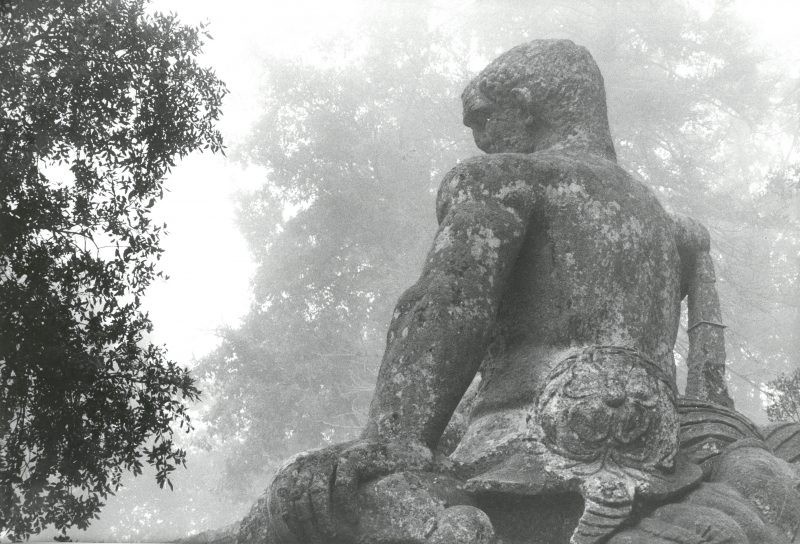
Sigrid NeubertBomarzo, 1974© Staatliche Museen zu Berlin, Kunstbibliothek / Sigrid Neubert
Restless, I await the coming morning; I am alarmed to see the landscape in front of my window vanish in a dense November fog. I hoped for fog. Only in fog can I show that which moves me. I want to leave this ’sacred wood‘ its secrets, superimposing veil after veil on top of it, allowing the events that have bewitched it to become even more unfathomable.
The fog gives me a light that traces out no precise contours. The forms of the mermen, nymphs, and monsters soften into indefiniteness, vague- ness. They look at me, are close to me. They smile. I ask to hear their stories. I enfold them in veils of mist.”
Park (the Garden at Nymphenburg), 1974–88

Sigrid NeubertOhne Titel (Gartenanlagen zu Nymphenburg), 1974-88© Staatliche Museen zu Berlin, Kunstbibliothek / Sigrid Neubert
„My book The Park became possible only because Friedrich Ludwig Sckell, its architect, stood next to me in my imagination, so that I could speak with him. I had read his book. My photos were meant as a bow to this great man. I wanted to devise images that would correspond to his thinking, express what he would have desired: a garden for everyone, for every day, every state of mind. A garden where one can disappear into the green of the trees, can follow a little stream along winding paths, when one needs the water and its murmurings. A park for displaying oneself on the parterre.
I stand in the park. The small, black camera lies lightly in my hand. It is agitated, eager to capture what my eyes see. A gentle, rapid touch of the finger will open it, freezing snapshots on film. I look around, turning, con- tinue. I remain standing. That could be a photo. I allow the trees to tower up high into the sky. Without goal, I walk further. I am in my internal space, my eyes wander outward from here, my pictures grow here.“
Sardinia, 1984/86
„Only after I have perceived the light in all of its colors, forms, and grada- tions, can I show in the photograph that which moves me. The light clari- fies what I want to say, it helps me to express myself. To capture the light is part of my craft, one of my capacities as a photographer.
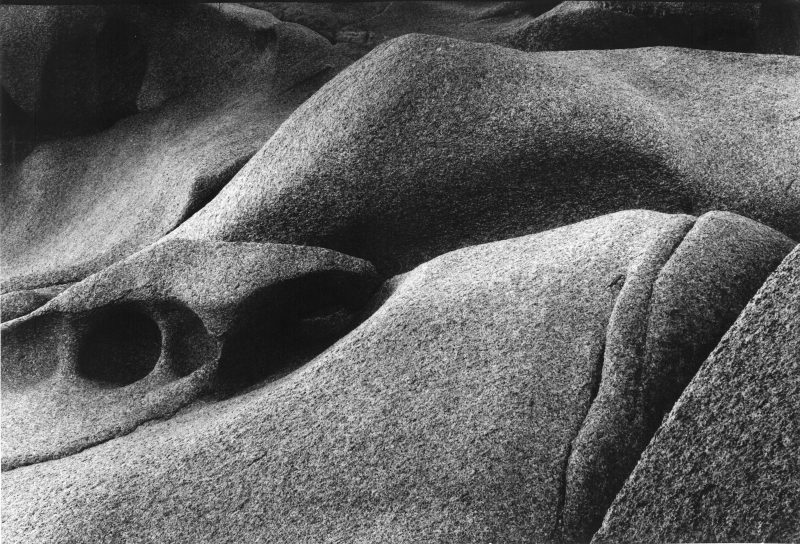
Sigrid NeubertOhne Titel (Sardinien), 1984/86© Staatliche Museen zu Berlin, Kunstbibliothek / Sigrid Neubert
The light is present in infinitely fine gradations, it envelops with its glare, follows the forms of things, gives them vibrancy. Every day, every mo- ment, it endows my counterpart with a different face.
The sunlight is profligate, it enhances, lends emphasis. A photo is defined by it. It can give the image glistening white surfaces or deep, dark black shadows. Ceaselessly, the sunlight is transformed.“
Malta, 1984–88
„In an interview, I spoke of my desire to photograph the temples of Malta and Gozo as though I had reverted to an earlier time. As though I could render the life of the stones visible with my camera. For four years, I trav- eled again and again to Malta and Gozo. Using my camera, I wanted to feel my way slowly into the mystery of these megalith structures, to think my way into my images from there.
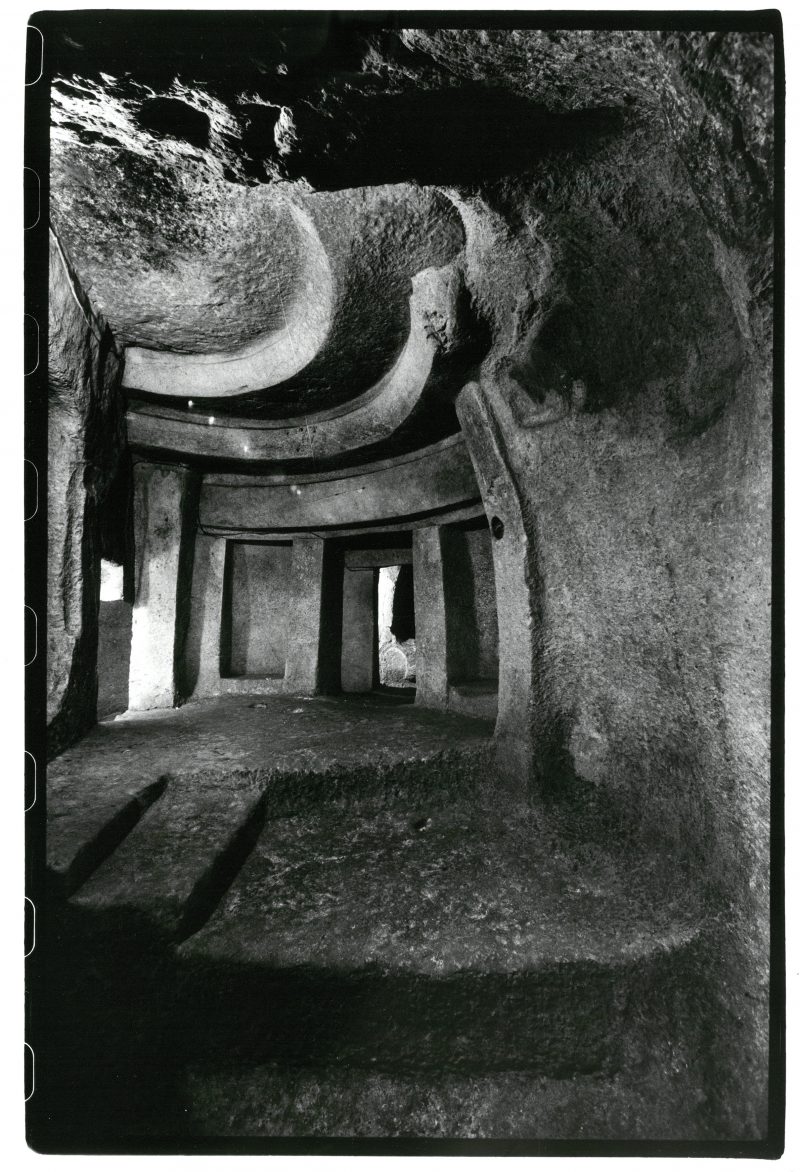
Sigrid NeubertHal Saflieni: Zugang zum Allerheiligsten des Hypogäums, Malta, 1984–88© Staatliche Museen zu Berlin, Kunstbibliothek / Sigrid Neubert
Growing numbers of people visit the temples of Malta and Gozo, exposing themselves to the inexplicable. To behold these stones is to be terrified and menaced, to become engrossed. As though they approach us in the enormity of their power and presence.”
Flower Blossoms, before 1999
„A photographer has many pairs of eyes. There are rapid, agitated, pre- cise, slow-moving, tender, scrutinizing, laughing, observing, and aston- ished eyes. The photographer takes care that they remain free as they look, in their sensitivity, are never confined. Otherwise, they might lose their curiosity and waywardness. Eyes want to be re-enchanted, again and again, to be carried off into the unknown, into incertitude.
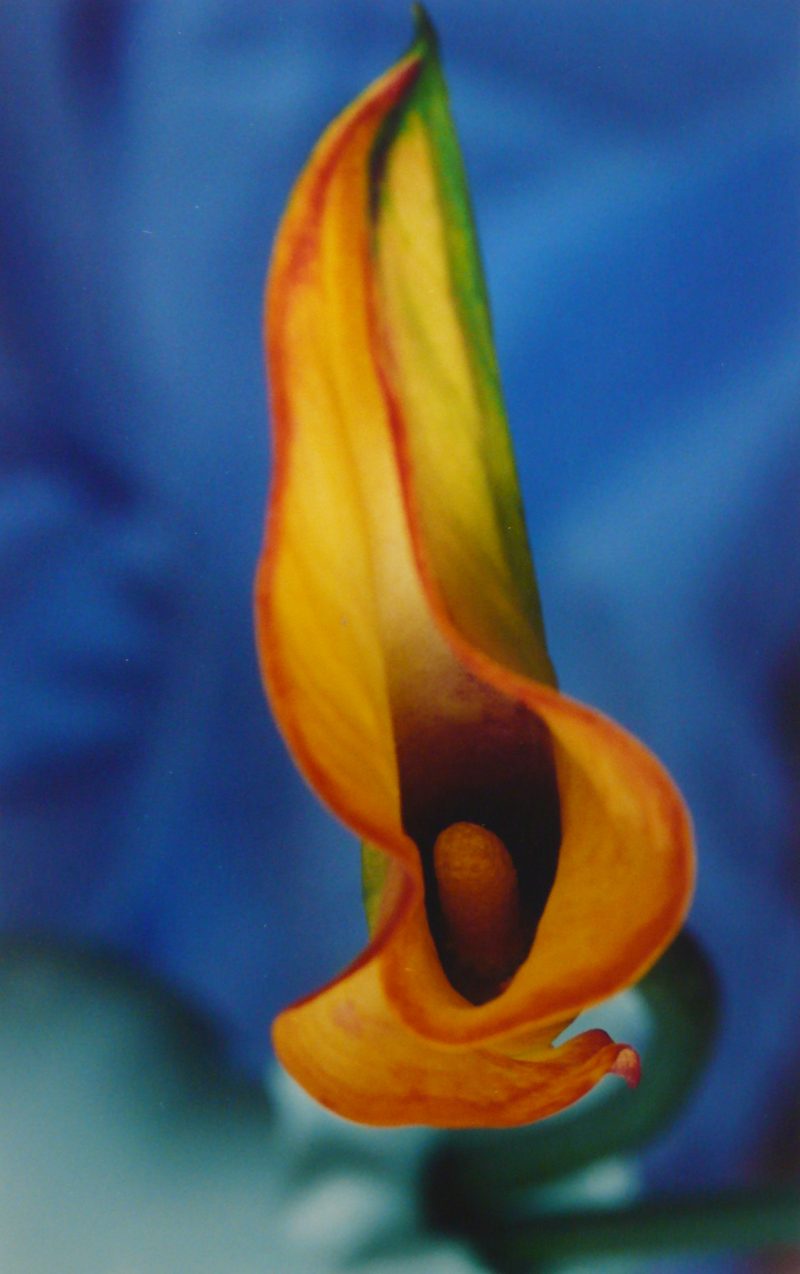
Sigrid NeubertOhne Titel (Blumenblüten), vor 1999© Staatliche Museen zu Berlin, Kunstbibliothek / Sigrid Neubert
When my eyes follow the flower blossoms, they become excited, open wide, are tender. How shall they grasp the beauty, the metamorphic and erotic qualities, of a single blossom? My heart drops. I am small from joy. The proximity of the blossoms overwhelms me. There is no longer obser- vation, comparison, a desire for knowledge. It is as though I am paralyzed with the bliss of looking, incapable of using the camera to capture that which beguiles me.“
Constructed Images, before 2011
„I build my photo, inserting my entire being into the small image space. With a bold movement, unconditionally. The more boldly I yield to emo- tion, the lighter, the darker, the photo will be.
This does not proceed according to the rules of propriety. The only valid rule is to be entirely there, from the depths, with all of one’s senses, all of one’s abilities, and much courage. I am my gaze, without emphasizing my importance. I am drawn to the multiplicity, the disorder, the marvelous motley of life, its confusion and interconnectedness. I want to become a counterpart for that which does not cohere at first glance. I want to allow it to reach an accord in my own way. My photo should be polyphonic to hear and to see.”
Houses in the Landscape, no year
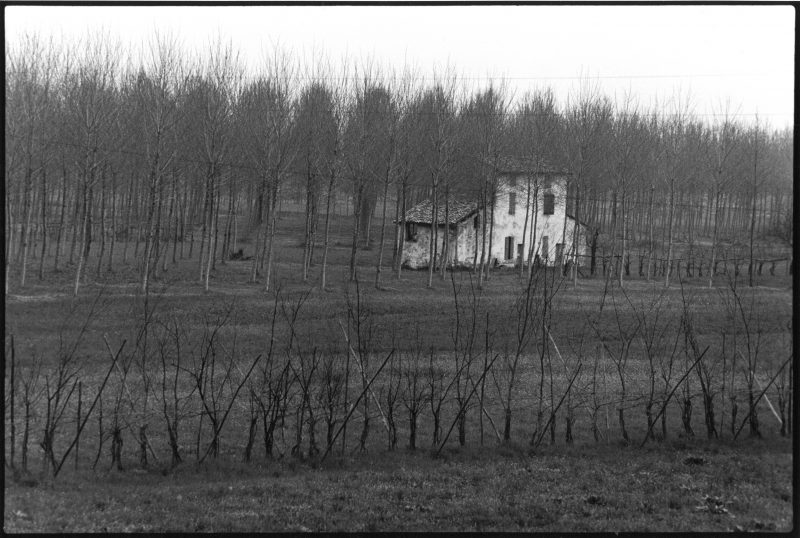
Sigrid NeubertOhne Titel (Häuser in der Landschaft), ohne Datum© Staatliche Museen zu Berlin, Kunstbibliothek / Sigrid Neubert
„I traveled once again to the south, into the expanse of an unknown land- scape. I found a house, it stood alone at the end of a valley. In nature, I forgot my photos. Now, I saw only the little house.
The house is unoccupied. The inhabitants abandoned it a long time ago. Lying there, uncanny and familiar, is a foreign past, looking at me. I taste it, hear voices, dream my way into a distant life. I imagine it. I see images. The camera has been in my hand for some time now. I join things togeth- er: the house, the path leading toward it, the house and the shattered window, the house in the festive garb of a tree with white blossoms, the house in its impermanence. Tentatively, I feel my way along its walls. I feel their cracks and fissures. This exploration is a palpating with the eyes. The house becomes a space my eyes traverse, recall themselves. The house looks at me. We behold one another. We find a modus vivendi. At some point, I no longer distinguish what the house tells me and where my own presence is manifested in the images.“
All citations from: Sigrid Neubert. Gärten des Lichts. Betrachtungen zur Fotografie, Christian Pixis Verlag München 1999
GENERALDIREKTION
PRESSE – KOMMUNIKATION – SPONSORING
Stauffenbergstraße 41 10785 Berlin
MECHTILD KRONENBERG
HEAD OF PRESS, COMMUNICATION, SPONSORSHIP
MARKUS FARR
PRESS OFFICER
Tel: +49 30 266 42 3402 Mobile: +49 151 527 53 886
presse@smb.spk-berlin.de www.smb.museum/presse
images
Staatliche Museen zu Berlin, Kunst-Bibliothek / Sigrid Neubert
Architekturmuseum der TU München
Archiv Detlef Schreiber
-Ends-

